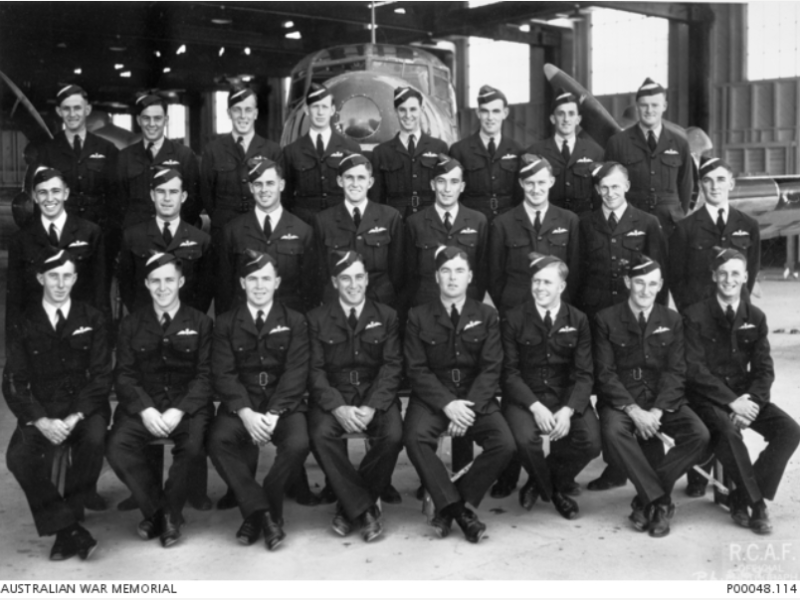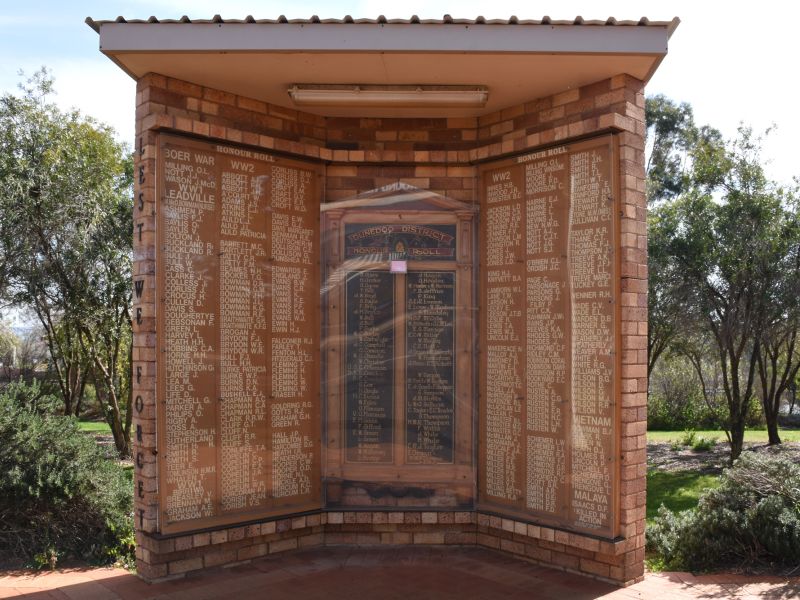Flight Lieutenant Barrington Armitage Knyvett, No. 460 Squadron, Royal Australian Air Force
Barrington Knyvett was born on 30 November 1915 in the Sydney suburb of Manly, the son of Edmund and Edith Knyvett.
He spent his young years in Leadville, Warrumbungle in New South Wales where the family ran a farm, Dhu Robin.
Later, Barrington worked alongside his father and brother as a grazier. He was well known and respected in the district for his many years in the horse section of the Dunedoo Show.
Following the outbreak of the Second World War, Knyvett enlisted in the Royal Australian Air Force, and trained as a pilot at Bradfield Park and Narromine.
In April 1941, he embarked to Canada, where he completed his pilot training at McLeod, Alberta, and then Britain.
As part of the Empire Air Training Scheme, he was one of almost 27,500 RAAF pilots, navigators, wireless operators, gunners, and engineers, who, throughout the course of the war, joined Royal Air Force squadrons or Australian squadrons based in Britain.
In Britain he undertook specialist training to become a bomber before being posted in December 1941 to No. 150 Squadron, RAF, flying Vickers Wellingtons.
Knyvett flew a full tour with No. 150 Squadron, in the “thousand bomber raids” and other bombing targets in the Ruhr valley.
For his service with No. 150 Squadron, Knyvett was awarded a Distinguished Flying Cross. His citation read:
This officer has a fine record of achievement. Throughout his tour his courage, skill and determination in action have been an inspiration to his crew. He has taken part in many raids of heavily defended areas of the Ruhr, pressing home his attacks with the utmost determination and with complete disregard for any opposition or for his own personal safety. His unconquerable spirit, coupled with fine leadership, has a set a magnificent example.
He received his award from King George VI at a ceremony at Buckingham Palace in December 1942.
Knyvett was a flight instructor before joining No. 460 Squadron, RAAF, in December 1943.
No. 460 Squadron would become the most highly decorated Australian squadron in Bomber Command, and suffer the most casualties.
Flying twin-engined Vickers Wellington medium bombers and then four-engined Avro Lancaster heavy bombers, the squadron lost over 1,000 men, including almost 600 Australians, as well as British, Canadians, New Zealanders and South Africans.
On the night of 2 January 1942, Knyvett’s Lancaster took off from RAF Binbrook for a raid on Berlin. Just after take-off, the aircraft – fully laden with bombs for the mission ahead – banked sharply and dived into the ground, exploding on impact.
Knyvett and all six of his fellow crewmates were killed.
Knyvett was 28 years old.
Today the Australian members of the crew are buried side by side in the RAF plot at Cambridge cemetery.
Lachlan Grant, Historian, Military History Section
Image: A group of airmen from New South Wales recently received their wings at No. 7 Service Flying Training School at Mcleod, Alberta, Canada, c. 1941. Read more https://www.awm.gov.au/collection/C38732

 Australian War Memorial
Australian War Memorial